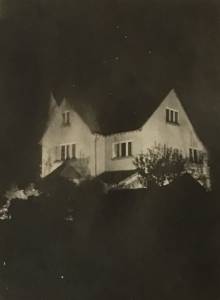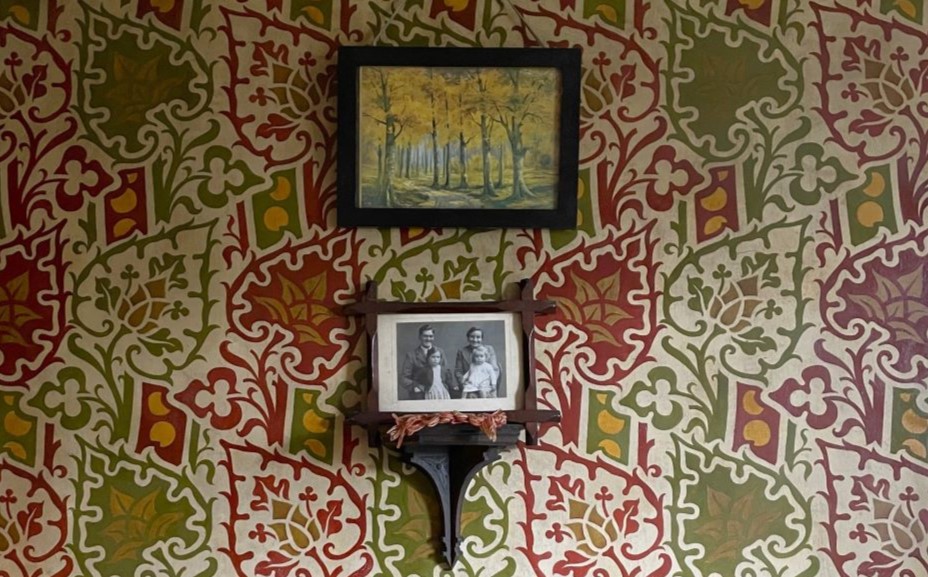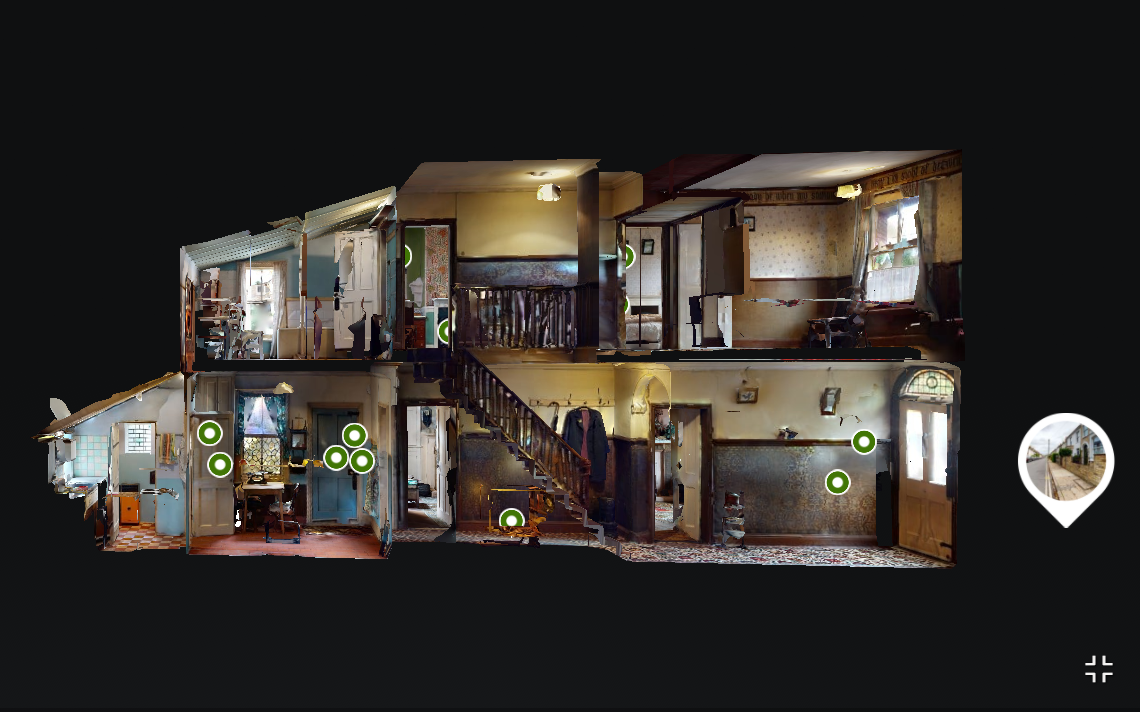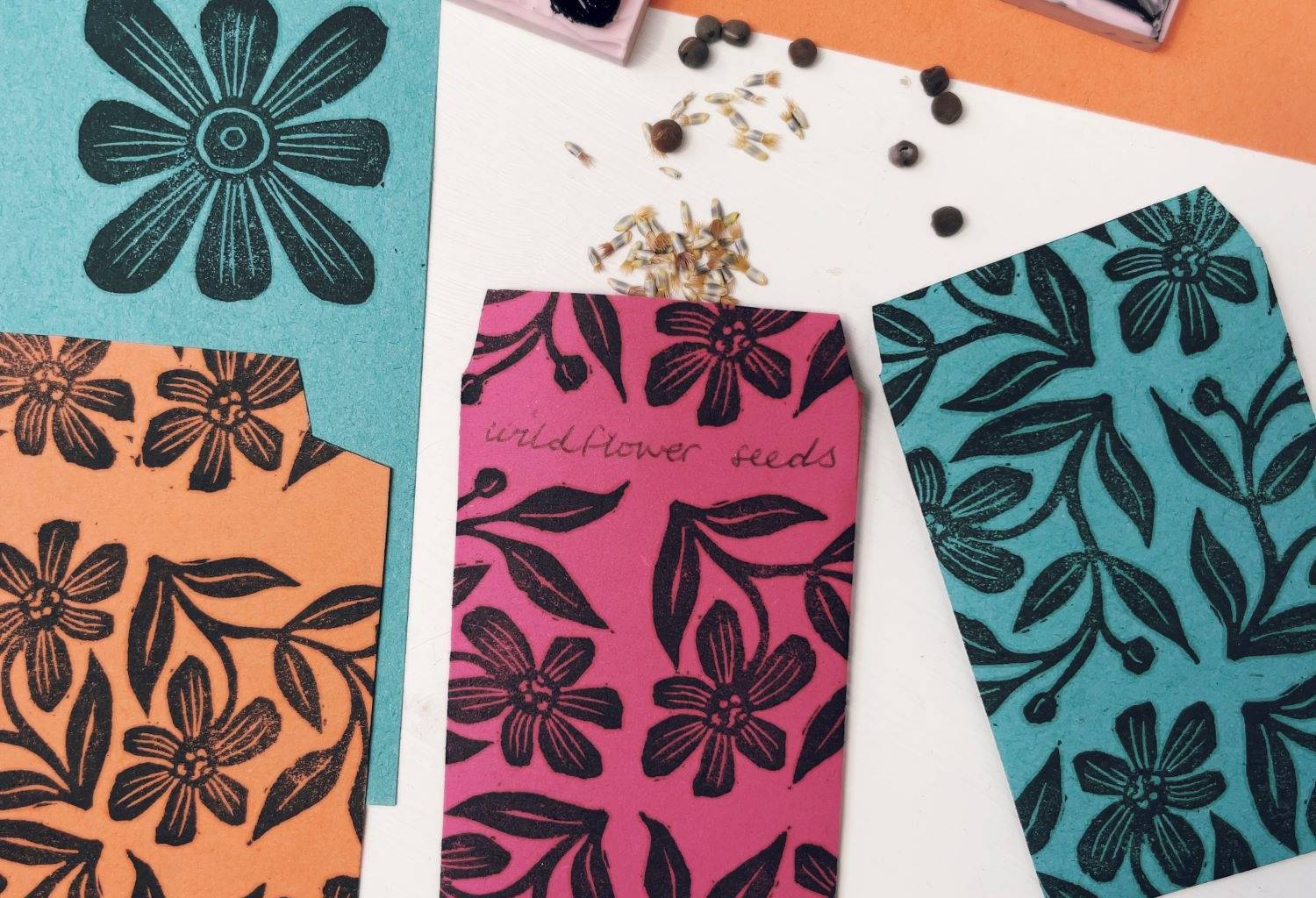Memories
Rosemary Leach was brought up at St Aidans, Chesterton Road, Cambridge. She is the daughter of John McLean Leach (1910 – 1986), son of Walter Perry Leach (1870 – 1934), son of Frederick R Leach (1837 – 1904). Her grandfather (Walter) built the house in 1909 and named it ‘St Aidans’ after the day that he married his wife, Eleanor. In these chapters Rosemary looks back on her days spent there and gives us a glimpse into a post-war family’s 20th Century life.
I moved with my parents to St Aidans in 1948, aged 4, after living at 11 Chedworth Street, Newnham, Cambridge with my maternal grandparents. My maternal grandmother had died – I remember standing in the hall looking up at soberly dressed family mourners in my best dress. My father’s sister, husband and family, had been living at 126 before us, with my paternal grandmother. We, my father, mother and I, moved to Chesterton Road and my maternal grandfather continued to live in Chedworth Street with a live-in housekeeper. Before the age of 5 I started school at St Mary’s, then called Paston House, where my mother had been to school.

My father made the smallest 1st floor bedroom into a kitchen, the largest 1st floor bedroom into a living room, the 1st floor ‘garden bedroom’ was their bedroom. My bedroom overlooked the garden on the attic floor above, where there was also a front attic bedroom and a storage room called ‘the black attic’. The beds had dark headboards and the mattresses rested on tight (once upon a time) stretched rather rusty coiled wire. Nowhere as comfortable as our modern supportive beds. Pillows were feather. Eiderdowns were feather. Sheets were flat and went to the laundry, returning stiff and shiny. Towels went too, far from soft and fluffy on their return.
A rubber-rolled mangle stood in the back yard which must have been used in times gone by. My grandmother had the ground floor dining room as a bedsit, with the old oak gate leg table brought into use when my aunt and family came to stay, which was several times a year in school holidays (my uncle was a teacher). The main kitchen was on the ground floor with ‘the back yard’ off it with an outside loo for the one-time maid and the coal hole and the coke hole. The kitchen had a coke boiler which probably burnt some of the rubbish, which otherwise was put in the metal dustbins, metal to contain ash from the fires. The dustmen called every Boxing Day for their tip (or ‘box’) and could be aggressive. There was a pantry off, with a meat safe (against flies) – a metal cupboard with a fine metal grille in its door – and marble shelves where butter and milk and groceries requiring cool conditions were kept. The front room was my grandmother’s reception room, filled with antiques, eg a grandmother clock on its own shelf, gilt convex mirror with bird holding spheres on a chain from his beak. I have kept the best walnut chest of drawers from that room, I employed Jonathan Porter to restore it for me. A lot of furniture needed attention. The grandfather clock in the hall required servicing frequently, latterly by Mr Jackson, who had a swashbuckling air. When I removed it I soon discovered that moving it upset it. It chimed, in the hall, every quarter of an hour but at night we always slept through it. Quite a lot of fancy stuff in the front room; 2 nice old dining chairs, with woodworm, were fiercely bid for at Cheffins auction rooms in 1994/5 and sold for £2,000, a lot of money but I think they had the original upholstered seats. I often wonder where they went. I had stood on one, rather foolishly, clutching an armful of china and glass from the nearby dresser, heard a slight crunch as I dropped neatly through the seat frame and landed with intact china, unharmed, bang through the middle. Other furniture and old things I sold to William Heffer, an antique dealer, as great aunt Ada had married Harry Heffer (of the bookshop, now Blackwells). My aunt took several fine walnut pieces of furniture for her home when she moved away. There is a beam from either side of the bay window where a curtain was put up in winter to prevent draughts. My father and sister probably acted little dramas there, like curtains on a stage. The house was full of draughts, the windows were lead paned with curlicue fasteners and the dining room windows were smaller panes, bowing out a bit. The front porch contained an old church pew and above it a seraglio, a sort of Eastern window where women were hidden from the men. A handsome knife chest stood on a hutch aka chest in the hall. Stolen amongst other items in 1994? There is a cloakroom/WC under the stairs. In my grandmother’s day it had the high wall-mounted cistern and I was unable ever to pull its chain to flush it successfully.
The loo seats were large, wooden, warm and unhygienic. The loo paper was Bronco, incredibly inefficient crisp dry rustly stuff. Toothbrushes were wooden, the bristles were exactly that, pig bristles. My mother used to boil new ones before use. We had toothpaste in flat tins (like shoe polish) and some heartily minted chalky white toothpaste called Kolynos. I loathed cleaning my teeth and had a lot of fillings. Going to the dentist was something I dreaded. When my father was a child they used a tin bath. Thankfully there was a decent bath in the 1st floor bathroom, you could lie comfortably back and add more hot water by twiddling the tap with your toes. My father installed a heated towel rail, which took the winter chill off the air, and then a wall mounted radiant heater which I used to put on 20 minutes before a winter bath. Early 20th century my grandfather had been one of the first to install an electric light – all 25 watts of it – in the hall.
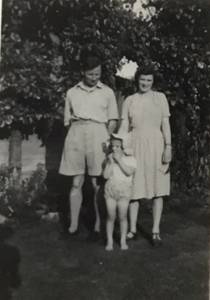
The hall is attractive, with shallow stairs to a galleried landing, arts and crafts style. There were dark stained floorboards, landing and hall had Lino that looked like parquet squares. My father somehow managed to hang regency striped wallpaper from attic to ground floors. My mother used a Cedar-mop on the lino upstairs. We 3 were essentially in an upstairs flat.
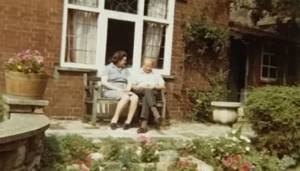
My father kept all of us, plus paying the live-in housekeeper at Chedworth Street to look after my maternal widowed grandfather, Pop, until he had to move to Chesterton Hospital. I took it for granted, but my mother longed for her own home. In those days young married couples often lived in a parental home and many homes in Cambridge were rented, as was Chedworth Street, which my grandfather refused to buy when he had the opportunity, as he was used to renting. He could have bought it for £1,500. I remember my father saying once, of 126, “you know, this house is probably worth £5,000 now”. Attached to the house was the garage, used by my father and aunt as a nursery as children and then by my father as a workshop and it had a telephone extension from where Santa Claus rang me in the run up to Christmas. I think it had a coke or wood burning stove in there with old Morris or Leach tiles, it certainly would have needed it. My father called jumpers and cardigans “woollies”, I expect they wrapped up well in winter. I was often cold. I had a hot water bottle in winter and took some time to slowly push my legs further down the bed as the sheets were so chilly. We placed our underclothes under the eiderdown so they were warm to put on in the morning. My father put in central heating for the hall, 1st floor living room, 1st floor bedroom, otherwise we had coal fires or gas fires in winter. In later years more radiators were added. I suppose my mother lit the living room fire late in the day and spent the morning shopping and cooking. Our first refrigerator was a small gas one, standing on a cupboard my father made, which I still have. Just room for frozen peas and a packet of ice cream in the freezing compartment. The butcher sold ice cream, Kilties? I think, it really tasted of vanilla. He made bookcases to fit relevant rooms and tall pine cupboards to fit the 1st floor kitchen, which were moved to be installed on the ground floor after my grandmother died in 1970. My mother came alive again when they had the house to themselves. She had, I believe, suffered clinical depression in earlier years as well as asthma.
I remember my grandmother’s cooker. Green and cream enamel, probably as advertised in a copy of Mrs Beeton’s cookbook. My mother had a Radiation cooker, and the Radiation cookbook, which she baked her way through. Ovens had to be changed when North Sea gas came into use. We ate well though for my taste everything was under-seasoned. My grandmother had a long stay in Chesterton hospital with diverticulitis; her diet contained a lot of plain cake, pastry and white bread. There was a useful little cluster of shops to the east of St Aidans along Chesterton Road. Next door was the butcher’s house with shop below, Mr Marsh, who rented the space nearest our fence to Miss Venner, the greengrocer. Mr Shreeve had the sweetshop – how he kept going during rationing Lord knows. It must have been when rationing ended, I was given sixpence to spend. Mr Thom was the white coated chemist over the road. I had a lot of childhood illnesses and frequent constipation or tummy upsets. Nasty medicines. Maybe we all did, us baby boomers.
My grandmother had a wardrobe in her kitchen, I expect there was nowhere else to put it. The window there was high, so an Edwardian maid or cook couldn’t daydream. There used to be a bellpush in the dining room which rang in the kitchen. The garden, in its heyday, had been carefully laid out, one area we called “the Italianio” as it was a square bed paved around and with tall dark green conifers at the corners. My father had no feel for gardening, but he made concrete slabs to fit paths by pouring concrete onto newspaper which overlapped bricks placed around to the required shape. Who would do that nowadays? The conifers grew taller and taller, quite out of proportion and leaned over alarmingly in high winds. My mother started to take an interest in the garden one summer, she put petunias everywhere. There weren’t garden centres, I expect they were bought on Cambridge market, there were loads of snails to be dealt with. Hedgehogs were never seen. My father filled in several island beds and grassed them over, simplified it. There was a ‘potting shed’, a dark tiled place, no earthly use (pardon the pun) for growing plants on. There was ‘the bike shed’ at the side of the garage run – which was concrete, I expect he laid that. Yes he did, because the cats’ paws were pressed into it and possibly my handprint, just before it set. He built garages at the bottom of the garden and easily found tenants. He was always sawing or drilling or working in one of the garages. He used a trailer to take things around the town to his mainly lady customers, he was a charming man, latterly he occasionally hired a van, but wanted a fairly decent car to take us out and to take to the Gog Magog Golf Club where he played with friends probably twice a week. He met my mother through giving a lift to my grandfather, who had joined the club but found it a long journey with clubs on his pushbike. Pop and Billy adored and respected him, there couldn’t have been a better in-laws relationship. They all holidayed together when my parents were engaged.
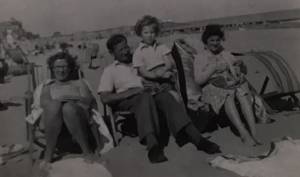
Household items had long lives. You bought furniture to last. I have my grandmother’s chesterfield sofa, partially re-covered and with the springs serviced by Jonathan Porter, albeit now with a Plumbs stretch cover. We first had a television in 1948. I thought it just showed children’s programmes because I went up to bed early, aged 4.
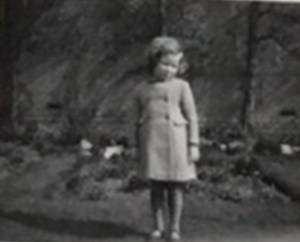
Mr Islip had a shop on Chesterton Road, between The Old Spring and Mitcham’s shop, and he mended TVs, which frequently went wrong. “Normal service will be resumed as soon as possible” came on the screen all too often (9 inch screen, all black and white) and we watched a potter at his wheel or a kitten playing with a ball of wool while the BBC got the programme going again. Dramas were played live. Jack Warner in ‘Dixon of Dock Green’ faltered due to illness in one episode and the nation all worried about him. Coronation Street was black and white and full of pithy Mancunian humour. The ‘horizontal hold’ frequently went wrong, zig zag lines appeared. My grandmother came up to watch tv occasionally but was usually in her bedsit reading with a magnifying glass or listening to the radio, “In Town Tonight”, classical and dance music. My great grandfather, FR Leach, had numerous telephone numbers for different commercial addresses when the Cambridge telephone directory was just a few pages thick, but long distance calls in my childhood were rare, a bit like taking a taxi or calling the doctor out, a fearsome man, in the mode of Doc Martin. My grandmother and her daughter corresponded regularly by post “Dearest Mama” using fountain pens and Basildon Bond. The first ballpoint pens came in when I was 11, called liquid pencils with grey ink. Sheets were ‘sides to middle’d with hand Singer sewing machines. The wardrobe and dining furniture upstairs were wartime Utility, well made but dark stained. Curtains were up for life. I have always made my own as when I had a mortgage I couldn’t afford made to measure and wanted washable, I still do this, good quality cotton, pre-shrunk at home, wash them every 3 years or so. Loads of ironing. My bedroom curtains are 35 years old in their 4th or 5th reincarnation (Moygashel cotton). My grandmother used her kitchen table to make table runners and cushion covers from bolts of fine quality Old Bleach linen from Ireland for sale in the shop, W Perry Leach & Son, 18 Kings Parade. It is now the Museum Shop, I was in there recently, the 2 pop-pop gas fires long gone and the toilet pan with ‘The Jap’ printed inside. Mr Anstey who worked there did accounts at a high Victorian desk. I kept the ‘rolling pin’ style ruler, rolled up and down the pages, I keep it in a hall cupboard in case I ever need to bash an unwanted caller on the head! Going back to soft furnishings: I make my own cushions using generic zip fasteners – you buy the zip length and zip pulls separately, quite a fiddle to get the pulls on, and no end-stops. Very cheap and handy for bench cushions, good old John Lewis. I think my grandmother ordered any clothes or household equipment from the Gamages catalogue, the Argos catalogue of its day. The Cambridgeshire Collection have mislaid a bill from Eaden Lilleys for £5 which I lent them, equipping the house when she moved in – probably a wedding present. She wore a hat when out, summer and winter. Winter coats were investment buys, dry cleaned each year. She was a milliner in her youth, loathed it, she once owned a house in Praed Street, London, so I guess worked in London and stayed with relatives. Her sister, who was a beauty in her youth, married a Londoner, Uncle Albert, who couldn’t act – or maybe couldn’t make a living from the theatre – but adored theatre, and worked at an exquisite little London theatre, the Palace or Cambridge Palace I think. Their daughter became a London model in the days of shingled (waved) hair and short shapeless shift dresses, and married the son of the Lord Mayor of London and went off to live in luxury on Jersey. Their son was absolutely gorgeous, Maurice Booth, my mother and I drank in his bearing and fine features when he visited us. I have a photo of him in his RAF uniform, I wouldn’t have said no!
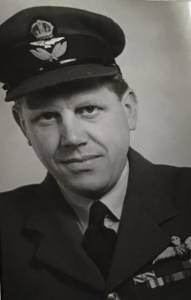
My father usually bought secondhand cars except for a Ford, which was trouble from the word go. He was a good driver, just as well as no test was required then. My mother didn’t take a test either and was a nervous driver so gave it up. Breakdowns and burst tyres were common. The house had bus stops practically outside – still does – very useful for travel to the shop, though my father was well-trained to give ladies lifts. You could park in Kings Parade then. As a young man my father had a Jack Russell dog, Jum, who accompanied him round the golf course and to work and one day turned up at the shop, having jumped on the 101 bus in Chesterton Road and got off in town and found his way there. My father and aunt had attended a prep school down de Freville Avenue with a very good reputation, I have one of his glowing reports. Then they went to the Perse and luckily did not have to be removed from there when grandfather Walter Perry Leach had financial difficulties though it was a near thing.

Christmas was the only day we ate chicken, you couldn’t get them, which was ordered and collected from a Miss Apps somewhere rural – her house whiffed a bit I recall – and my grandmother joined us upstairs. Possibly because roast potatoes need a hot oven, we never had them with a joint or at Christmas, something I rectified as soon as I could. My mother’s roasts went in the oven breakfast time on Sundays – how people now eat bloody meat I don’t know. Home made stuffing. Eaden Lilleys Newmarket sausages. Heinz tinned Christmas pudding – it was excellent if the wrong shape, custard, Batgers Figs, glacé fruits. A coal fire all day. The grates had deep wells under them, only requiring emptying once a week. Christmas cake, the royal icing whitened with a dab of ‘the blue bag’, a washing aid to keep whites white. Breakfast when I was little was substantial, porridge, a cooked plateful – bacon and fried eggs, scrambled eggs, fried bread and tomatoes, toast and marmalade. No non stick pans then. The washing up stick was wood with lengths of string at the end. Scrambled eggs, porridge etc., all took ages to clean, and I think Lux soap flakes – slippery solution – were used until Fairy made a washing up liquid. I have an old tea set which had been washed earlier than that, with soda, the pattern much worn away. Eggs were scarce and stored in an isinglass solution in an enamel crock. I hated margarine – possibly wartime whale fat recipe – breakfast cereals came later – Rice Krispies was a favourite. I disliked tea and had instant coffee made with red or gold top milk and 4 teaspoons of sugar. Lunch was the main meal. Boiled potatoes and veg usually with a roast on Sundays, cold roast Monday and possibly Tuesday, chops, fish on Friday, sausages, stews, always a home made pudding with custard using Birds custard powder. Then bread and cheese for me and my father. The cheese was a triangular slab, strong, dry and sometimes cracked. Primula soft cheese – you can buy it now but it’s not as good. Somewhere along Milton Road sold fresh cream cheese sandwiched between straw mats, nasty stuff. Bread, fish, milk, all delivered, the milk by horse and cart. Bread from Maskalls Bakery in Newnham, fish from Sennitts in Peas Hill. Afternoon tea was pure carbohydrate. Buttered toast or crumpets or bread and butter, home made or Fitzbillies cake, chocolate coated marshmallow on biscuit, forget the name. You can still get them. Supper might be pork pie, a bit of salad, more bread. Weekends, elevenses, tea or coffee and biscuits or jam tarts. Miss Perrers Taylor, my optician, decreed “this child must have a pint of milk a day” which was a problem as I hated plain milk. All our puds came with Birds custard. Then Nesquik milk shake powder, Birds Instant Whip and Angel Delight arrived so it was easier. I came home from St Mary’s for lunch as their food was dreadful if not revolting – the bus fare from Bateman Street to De Freville Avenue was a penny halfpenny. I remember my first school meal. Boiled potato, cold pickled beetroot and tinned spaghetti on large white plates with cheap adult cutlery, couldn’t eat it, a nun came to encourage me with “through the pearly gates, down the red lane”, she didn’t succeed. I once picked half a comb out of their mashed potato. At home I had little plates and small pieces of silver cutlery, I guess I was spoilt. My grandmother cooked and ate her lunch downstairs. She baked a lot too.
Upstairs we rarely entertained, if we were asked out for meals we didn’t return the hospitality, we had no dining room. The Utility dining table, 2 flaps, was moved out from the corner to hold Christmas lunch or the rare visitor’s meal, we 3 ate in the kitchen, it was a squash. Exceptions were my mother’s first cousins from Montague Road, old fashioned spinster sisters always referred to as “the girls”, some of my school friends and our delightful neighbour on the other corner of De Freville Avenue, Madeline Stapleton, another spinster – so many women were, menfolk having been killed in 2 world wars.
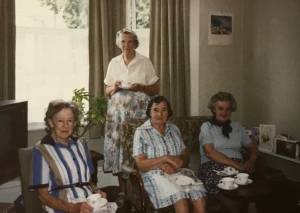
Madeline adored cats, as did we. The most The Girls got was a drink of squash, except at Christmas when teatime invitations were exchanged. Alcohol was rarely seen, I remember my mother offering a visitor a gin and orange (probably Kia Ora squash); I was sensibly introduced to booze via Babycham as a teenager, I tried whisky and beer but didn’t like the taste; I have been teetotal for 42 years. At Montague Road afternoon tea was always the same. Thinly cut bread and butter (Hovis, the health loaf) with Tiptrees jam, home made sponge cake, some chocolate bar for me, I don’t like plain cake. Very occasionally my parents went to the cinema or theatre. They had a built in babysitter downstairs but post war people didn’t spend money on meals out. If we went out for the day we usually had a hotel meal mid day or on the return home, such a treat for my mother. Cinemas were uncomfortable, I always got a headache, the seats were too low for me and smoking was allowed so the atmosphere was horrid. At St Mary’s, one of my classmates’ Dads ran a cinema and the class had free entry to the Coronation (in colour) and Ivanhoe. Alas we didn’t go to the Arts Theatre pantomime – I have been many times as an adult, by myself twice, love it.
None of us went to church even at Christmas until a school friend’s mother decided I should accompany her daughters to St Giles on Sunday mornings. I had a lot of “tummy aches” on Sundays to excuse me from going. Sixpence for the collection. Coloured stamps, bible pictures, to stick in an attendance card. I was confirmed at about 14, it seemed to be an inevitable rite of passage, and had to borrow a white cardigan from The Girls. The preparation had included a confession, I thought and thought and couldn’t think of any sin I had ever committed and invented borrowing a fountain pen without permission. Then or at a service afterwards I took Holy Communion once, never again, if it was the blood of Christ I thought it was a nasty idea to drink it and the chalice was perfunctorily wiped before sharing the contents with others, smelly incense everywhere, didn’t like it. Later I was briefly an atheist, then a spiritualist in a development circle and since 1976 have followed a spiritual path from India. A year or so later than the confirmation a friend and I went to ballroom dancing lessons at the old Masonic Hall down Tibbs Row with Peter Sturt, I was hopeless but my friend won medals. My father didn’t believe in anything, my mother and I mildly psychic. My mother got up during lunch one day in the 1970’s and said “I’ll just ring Chesterton Hospital” (where our favourite great aunt, Toll (Flora) Chandler, lived aged 94). The phone was in the kitchen, where we ate, so I heard her ask if Aunty was all right, nurse said yes, mother said can you check, nurse came back and said so sorry she’s just died. Much later I petitioned for the old graves at St Andrews, Chesterton, not to be grassed over on behalf of Leach and White Robinson ancestors. To protect me from getting upset I was not told when Pop died, again I remember soberly clad mourners, he just sort of faded from my memory. When cats went on their last trip to the vets a new kitten arrived the same day from The Blue Cross so the old cat was forgotten. Now I find bereavements shattering. Kids are involved in funerals now, certainly not for me when I was a child.
Latterly my mother employed cleaners for upstairs when she was working at the shop, and ever after. She employed a gardener too. Just a morning a week. My grandmother pushed a Bissell sweeper round the ground floor. We had Hoovers, I had cast offs when I had my own home. When I cleared the house the Persian rug in the hall was filthy. We had a window cleaner called Mr Tight, a handsome man with sparkling pale blue eyes. My father did any decorating needed, usually when it had been needed some time. He made me a bookcase in my bedroom with built in radiant fire. Wallpaper was much in vogue. He used a brush for any paintwork and stored them in water in glass jars in the house garage. He occasionally rolled the grass then gave up and the roller was left to rust; he cut the grass assiduously with a Webb’s self propelled electric cylinder mower latterly, excellent machines. The campion weeds in the grass were flattened and then pinged up again. There were daisies all over the grass, very pretty in summer. Every year he erected scaffolding and suspended a trapeze bar from it for me, I loved it. One year he was adjusting the bolts at the top and the thing teetered and fell, luckily just his ankle was injured. Another time he dropped a Butler’s sink on his foot, that was nasty.
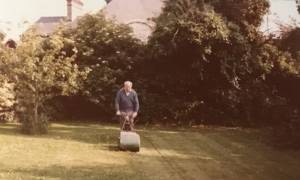
We all loved the house. Latterly there was a lot wrong with it. Metal gutters were leaking, water got in around the chimneys and into the plaster in the front attic bedroom, fresh wallpapering required everywhere, insulation was badly needed in the attic rooms – I used to fry in summer, the roof tiles were needing attention, there was ingress of water where the garage adjoined the hall/ garden wall – my father put up pictures to cover it which, when removed, revealed green mould so we put them back.
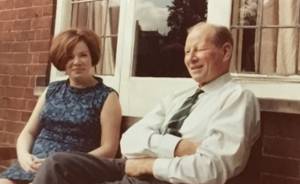
My father had put in the electric cables and radiators and a gas fire which never worked well, I persuaded my mother to get a Corgi registered gas expert to fix it after he died and for the first time the clays glowed red. He’d have a go at anything. After my father died in 1986 my mother had double glazing installed by Camglaze, externally fitted and the delight of burglars later on. The difference was amazing. Draughts still whizzed in through hinged home made cat flaps so no lack of ventilation but it was degrees warmer. When Chesterton Road was used as a ring road the houses bordering it were given free, by the council, secondary glazing on affected windows with compulsory air vents – soon blocked up by householders. I kept saying why not move, but they had been through a war and were waiting for the road use for lorries to come to an end. The houses trembled, the noise was appalling.
During WW2 a Mr Walters had been billeted (compulsorily) at 126 and was treated well, he bought them a lot of gramophone records, and whisky, which was mixed with petrol for the car. They grew perpetual spinach, attempted veg gardening and kept hens. Over in Newnham, Pop had an allotment and grew all sorts of veg including sweetcorn, he told me each kernel made a cornflake. When widowed he would appear at Chesterton Road in his plus fours and tweed cap bringing Quality Street and sugared almonds for me. On hot days my father donned his army shorts which stuck out sideways at a 45 degrees angle. We were invited to his best friend’s eldest daughter’s wedding with reception at the University Arms. That morning I was finishing off a striped green suit I’d made, my mother was fussing as to what to wear, my father fetched out his demob suit and realised it was definitely out of fashion, with turn-ups, so got busy with scissors and sellotape and removed them. He went and bought a suit soon after. Usually he wore rather loose grey trousers and tweed jackets and tweed cap, bought in sales at posh university outfitters. He looked very smart in his camel coat. For rough jobs he wore a duffle coat or a donkey jacket (leather – plastic? – reinforced shoulders) which I mended for him on the Singer. My mother was not confident in her clothes as she had gained weight. She and I went clothes shopping, good shops, Eaden Lilleys, Heyworths, Marks and Spencer’s. Not so much Joshua Taylor’s, though I loved JT’s if a bit awed by the sales assistants. Her underclothes were old fashioned even then. Summer and winter, 2 pairs of directoire knickers (‘bloomers’), a silky outer pair in pink, and white liners. A roll-on, a cross between a suspender belt and a corset which had to be pulled on with difficulty. Stockings, even after tights came in in the early 60’s enabling mini skirts. A vest. A silky full slip. Strangely she never seemed to get hot in summer. Non-wired bras. She dressed like the Queen in winter in tweed skirts, twinsets and (fake) pearls. Deodorants were in their infancy and ‘dress protectors’, rubber backed sew-in shaped pieces of cotton, were used inside wool jumpers. I made a lot of my clothes as a teenager and beyond, wonderful Gordon Thodays in Bradwells Court sold material and patterns. All on a hand machine till I acquired a treadle machine from Mrs Collings’ estate for £2. Clothes shops were few and far between. I had no money for clothes from shops as my salaries didn’t stretch very far and in schooldays, never having had the work ethic, several of my peer group had Saturday and Christmas jobs – M&S, Lyons Corner House etc. – but it never occurred to me to work if I didn’t have to and I assumed that I would flit around offices for a few years and then get married and stay home.
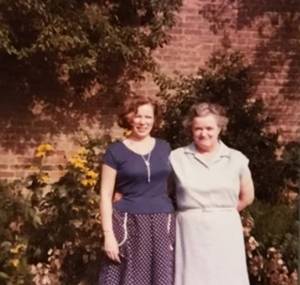
We got to know our neighbours. My grandmother was friends with Mrs Gray in Chesterton Road and dear Mrs Collings along the Avenue. She and Mrs Collings exchanged Christmas presents, usually soap or talc, Ashes of Violets, Muguet des bois, lavender. After breakfast and present opening upstairs on Christmas Day I would go down to my grandmother with her present and stay while she opened hers. Mrs Collings’ smile was to be seen to be believed, a brilliant flash of perfect dentures. That generation often had all their teeth extracted at age 21 to be sure of perfect denture smiles for the rest of their lives. Billy did, my mother remembered her drawn appearance on return from the dentist with a gobfull of plastic. Maybe that is the origin of ‘looking drawn’. Billy died in Addenbrookes Hospital, Trumpington Street, I remember being taken to visit, white tiled walls and high beds and some green decor. There were high windows in the ward, the ‘new’ vogue of ventilation was well known in those days.
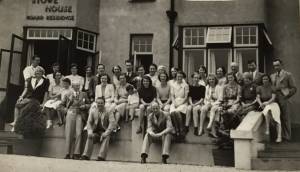
Mr Porter, down the Avenue, gave me used tennis balls from Wimbledon and used foreign stamps. I don’t know if my grandmother and Mrs Collings used each other’s Christian names. Mrs Wool lived in the 1st house over Sandy Lane. Mrs Bussman lived further down De Freville Avenue on the opposite side and issued royal commands to feed her budgie when she went away. She rewarded my mother with tea and Germanic hefty sandwiches plastered with butter and containing fatty ham, my poor mother didn’t know how to swallow them. Next door on the east side were Mr and Mrs Marsh. They were childless and he was the butcher. Rumour had it he drank. She comforted herself with a poodle and a Scottie dog. Their house had an electricity substation at the bottom of the garden. I often went round to reclaim tennis balls I had hit over. Opposite us over Chesterton Road was Miss … and her white cat, Romeo. Cats didn’t live as long as they do now because Kit e Kat was the first tinned catfood, it looked and smelt like crushed pilchards. Our first cat, Pooley, thus named by my cousin Celia instead of “pussy”, ate ‘lights’, animals’ lungs boiled up. Later the cats were pampered by my mother – warm milk, cooked rock salmon, leftovers from the roast, luxury tinned cat food bought by the tray from the Co-Op. Pooley was put out every night come rain come shine. After Romeo and mistress departed the 2 Miss Hinkins arrived, both headmistresses – the school near the river by QE bridge, Brunswick, and Trumpington Junior. They had connections with my father to do with Royston and I think chose their home to feel safe near him. About 6am Pooley climbed a tree, jumped on the garage roof, from there onto the 1st floor landing windowsill (which was narrow) and thundered on the glass with a back leg. My father was an early riser and then let him in. The Hinkins family were delightful, everything around them was perfect. Polished furniture, exquisite knickknacks, silver teapot, their home-made mincepies were magnificent. My father made their front door for them and did a lot of maintenance and decorating, for £61. I have the copy invoice. Kitty Heffer lived on Chesterton Road on the east side of Queen Elizabeth Way – once a quiet little highway called Haig Road, a relative of my father’s, she bred elkhounds, moving to Tewkesbury. While Haig Road was a quiet highway and before Montague and Humberstone Roads were blocked off from it, I experimented with driving my father’s Vespa (bought 2ndhand from Bertha Hinkins) and muddled the accelerator and brake and shot out of Humberstone Road onto and across Haig Road into an open gated drive on the other side, oh so fortunately U shaped and managed to steer out of the other end of the U and across Haig Road again, drove the short way to De Freville Avenue and managed to locate the brake. I never went on it again. Later I was given a secondhand Mobylette, like a bicycle but with a motor. My flared jeans caught in the flywheel a couple of times, causing instant loss of power so I fell off. On today’s busy roads I could have been killed. No helmet.
My grandmother had 3 cousins living locally, Maud, Lou and Flora (Toll). My father had Leach relatives in a street leading to the river, Olive and Oliver Leach, and I think he kept in vague touch with cousins Tony and Francis Leach, the former was a favourite teacher at Milton Road school and had a passenger boat, the Empress or suchlike, on the Cam, my father adapted his boat so the taller part would hinge down in order to get under bridges. Francis was a war hero, sculptor and artist.
When it came time to sell St Aidans it was difficult, I placed it with Bidwells. Quibble quibble quibble about the attic stairs and attic rooms, which I had never seen as problematic except for the complete lack of roof insulation – the stairs were very narrow with a turn 3 steps up. The first new owner took them out and used part of the 1st floor bedroom to install wider modern looking stairs, I thought it spoilt the galleried landing and the proportions of the room. It is now greatly enlarged and modernised on the original footprint and as I write more extension is going on at the top.

A spring was discovered underneath – the river is not that far away. I would not have felt safe living there. I like a house where I can stand at the centre and have a view of ground floor windows and doors. Just before my mother died – she was in hospital, one of the 20% of broken hips who develop a deep vein thrombosis and die of it – the house was burgled, the left window of the front bay window totally removed, the very solid locked door to the hall jemmied open. Portable antiques were taken including a lovely gold musical powder compact given me by a boyfriend, possibly some jewellery. I ordered a burglar alarm straight away and moved in at nights as I thought they’d be back before the alarm work was finished. They were, I heard them in the garden from the garden bedroom and put Dr Scholls wooden-soled shoes on and clomped loudly downstairs and put on ground floor lights. The single paned garden door was vulnerable. I am pretty sure I know who was responsible. Next morning I returned to my bungalow in Bar Hill to feed my 2 cats and couldn’t get in, called out a locksmith who said someone had had a go at my front door keyed-handle. So I employed Homesitters at 126 and returned to Bar Hill. Someone saw the homesitters there and complained to the Council who came stony faced to the door re. Council Tax but when I explained I was paying people to live there following a burglary and bereavement they backed off “I hope everything goes well for you now, my dear”. They thought I was getting rent. A true volte-face. Who reported it after spying on the house? It wasn’t an easy time and I had been revving up to telling my mother she’d be returning to a burgled home when the nurse rang to say she’d died. I never loved that house as much as when I was using the last 2 weeks of ownership to clear it. With hindsight I should have made a few modifications and let to research students with a cleaner and gardener once a week and waited till someone appreciated the style of the house but hindsight is a wonderful thing. Soon after house prices started rocketing. It is nice down the Avenue. St Aidans is sandwiched between Chesterton Road and Sandy Lane (actually Little Lane but my father renamed it) and that’s not quite so good. You couldn’t put the bins out on Chesterton Road overnight without risking them being knocked over and people went in the front garden at night to defecate or turn the outside tap on. The tap had to be disconnected. My father’s brand new trailer was stolen from Sandy Lane. In my humble village street that doesn’t happen, strangers are few and far between down a cul-de-sac.
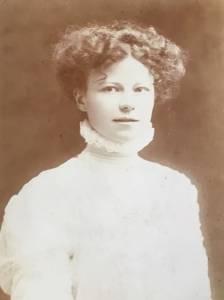
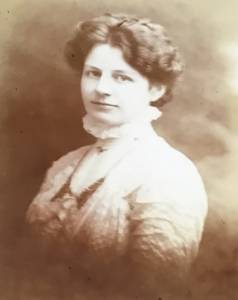
How did we spend our time at St Aidans? Upstairs we watched TV every evening, as it was the only warm room in winter and, as I did my homework there, that was a bit distracting. Sometimes we played a game – Scrabble, Scoop, Cluedo. My father did his accounts and my mother used her Ready Reckoner (a useful little red book with amounts in £sd (pounds, shillings and pence) and their different multiplications, eg 173 x £2 3s and 5d (probably did farthings too) to order more jewellery or other goods for the shop. I think there was a stocktaking every year. All the ladies knitted.
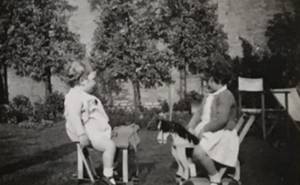
The daily newspapers were the Daily Telegraph, Daily Mail and the Cambridge Evening News. I had weekly comics, Mickey Mouse, Schoolfriend, Girl. My father read Mickey Mouse. There was a dull children’s publication, The Children’s Newspaper, all black and white with exhortations to save, didn’t have or want that. I spent some of my meagre pocket money on National Savings stamps – they had photos of Prince Charles and Princess Anne as children but I believed way into adulthood that saving for a rainy day meant when it was bad weather you used savings to go and have a spending spree to cheer yourself up. I amused myself during the weekends and holidays. Sometimes a friend came round to play, sometimes I went to theirs. Unbelievably, because I hated junior school, a friend and I went to mend books for the nuns during the summer holidays. Other kids had better things to do. I practised tennis in the garden for hours. I was expert on my trapeze. Unfortunately, before she worked at the shop, my mother didn’t spend much time with me, she didn’t drive well and my father had the car but we could have gone to the river or play parks. I looked forward to my aunt and uncle and cousins coming to stay because we did fun things and had picnics and went out a lot. My mother dreaded it, it reinforced the fact she lived in a shared house. I never learned to swim. My father and I went skating a few times at Milton Sewage Farm (yes, it ponged) but I fell over a lot. When I had had several childhood illnesses on the run and lost a lot of weight, we went on holiday to Cromer, The Girls came too, the weather wasn’t good. 2 or 3 times we stayed in Hunstanton at The Golden Lion; most years we had a couple of day trips. It was difficult for my father to leave all the jobs on hand. I remember going for a walk by myself for the first time, as a teenager, down de Freville Avenue to the river and back. I felt people must be looking at me, what is she doing on her own, then I realised I noticed everything around me so much more. Christmas we had a small artificial tree with tinsel and glass baubles, a few paper lanterns and when I was very young, paper chains. One year I was given indoor fireworks, one was a white tablet which, when heated with a cigarette end, created a snow storm. And it did, all over the room, my father and I chortled while my mother glowered.
I lived at St Aidans from age 4 to 19, when the urge to fly the nest arrived. Several times I went home, always expecting to be taken in as a matter of course, till I emigrated to South Africa in 1969 aged 24 to return 7 years later. Just over a year later I moved to Waverley Park, Great Shelford, what the yanks call a trailer park, not a wise move, then to Bar Hill for 14 years, Hemingford Grey for 5 years, then to a village nearer Cambridge, now the home where I have spent the most time. Always I was welcomed back to St Aidans, always “can’t you stay longer?” “do you have to go so soon?”. It is such a shame my mother was not happier there for over 20 years. It wasn’t doom and gloom every day, they were a well matched couple and there was a lot of good humour. I know they keep an eye on me. I avoided driving past the house for some while after my mother died but have visited it 3 times since, parts of it still remind me of when it was my home. It has changed and enlarged a lot. The garden is nothing now, infrequently mown grass, no daisies, much reduced. The atmosphere has moved with me here. I am glad I grew up there though I tend to simpler styles, having lived in spacious Rhodesian homes. My cousin Celia remembers her 5 years there with affection. It is a house that has been much loved. It is lighter and brighter than St George’s, F R Leach’s house down the Avenue and very handy for postbox, shops, buses. But I like my own home best, it is simpler. And easier to clean!
I had a panic attack a few years ago away from Cambridge and went to a first aid tent, hyperventilating. The doctor took details. When he asked for my address I said “St Aidans, Chesterton Road” and watched him write it down before realising. My dear old home.

